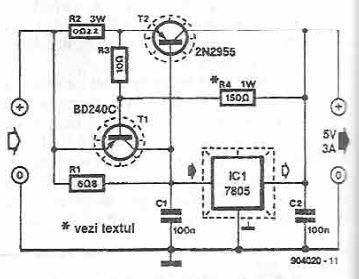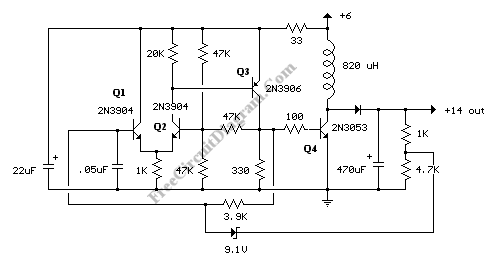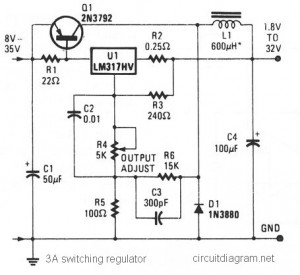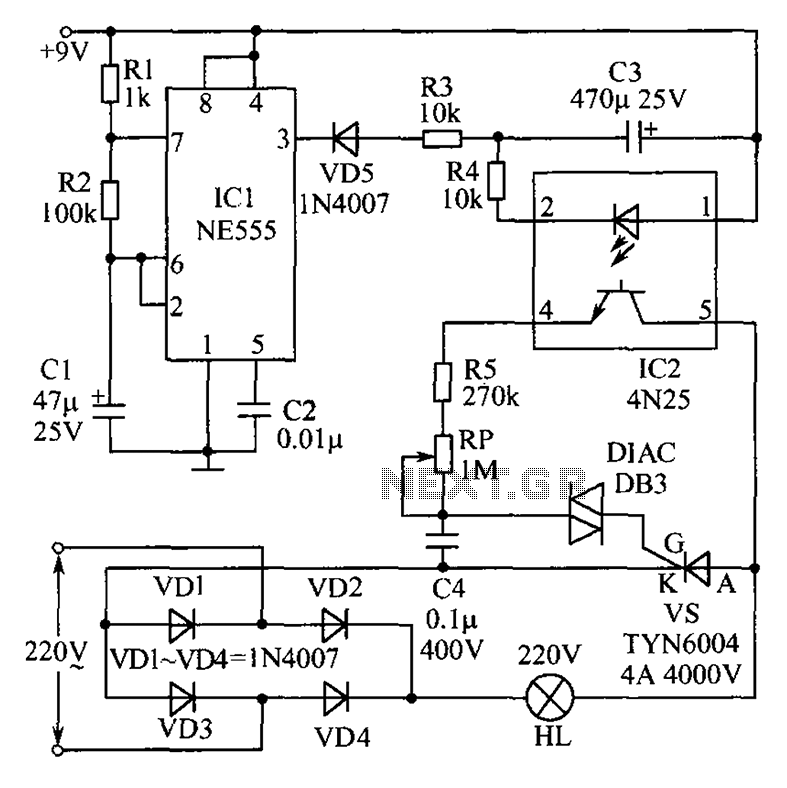
DN-41 consisting of high-current switching regulator
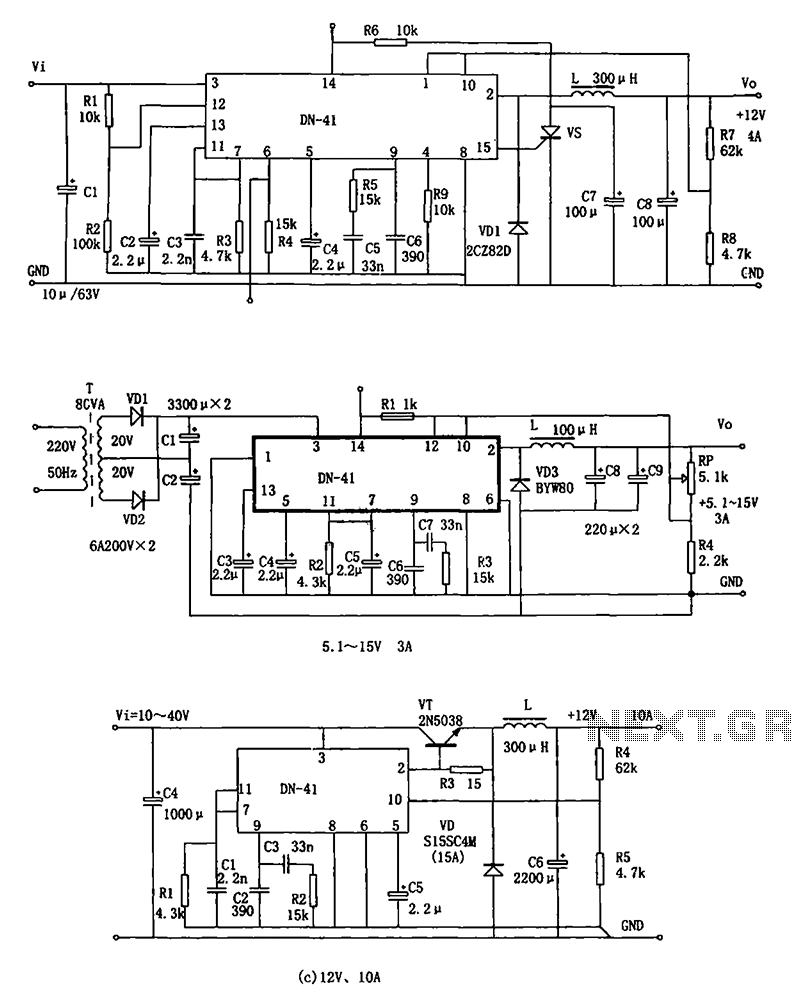
The DN-41 is a high-current switching regulator that includes an overcurrent and overvoltage (crowbar) protection circuit, a reset circuit, and a soft start feature. It is designed to operate with fewer external components while maintaining stability, safety, and reliability. The output voltage is continuously adjustable between 5.1V and 15V, with a maximum output current of 4A and a conversion efficiency of 90%. The switching frequency can reach up to 200kHz.
The DN-41 high-current switching regulator is engineered to deliver robust performance in power management applications. The design incorporates an overcurrent protection mechanism that prevents excessive current from damaging the circuit components, ensuring longevity and reliability. The overvoltage protection, often referred to as a crowbar circuit, serves to protect sensitive downstream components from voltage spikes, thereby enhancing the overall safety of the system.
The reset circuit is an essential feature that allows the regulator to return to its normal operating state after a fault condition has been cleared, facilitating easy recovery from transient events. The soft start capability is implemented to gradually ramp up the output voltage, minimizing inrush current and preventing potential damage to both the regulator and the load during startup.
With an output voltage range of 5.1V to 15V, the DN-41 is versatile enough to support a wide array of applications, from powering microcontrollers to driving motors. The maximum output current of 4A ensures that it can handle substantial loads while maintaining efficiency. The impressive conversion efficiency of 90% allows for reduced heat generation, which is critical in compact or thermally constrained environments.
Operating at a switching frequency of up to 200kHz, the DN-41 can minimize the size of passive components such as inductors and capacitors, leading to a more compact design. This feature is particularly advantageous in modern electronics, where space is often at a premium. Overall, the DN-41 high-current switching regulator is a reliable solution for applications requiring adjustable voltage outputs with high efficiency and robust protection features. As shown in FIG by DN-41 consisting of high-current switching regulator. DN-41 features overcurrent, overvoltage (crowbar) protection circuit, a reset circuit, soft start circu it, with fewer external components, stable, safe and reliable. The output voltage can be adjusted continuously between 5.1 ~ 15V, maximum output current of 4A, the conversion efficiency of 90%, switching frequency up to 200kHz.
The DN-41 high-current switching regulator is engineered to deliver robust performance in power management applications. The design incorporates an overcurrent protection mechanism that prevents excessive current from damaging the circuit components, ensuring longevity and reliability. The overvoltage protection, often referred to as a crowbar circuit, serves to protect sensitive downstream components from voltage spikes, thereby enhancing the overall safety of the system.
The reset circuit is an essential feature that allows the regulator to return to its normal operating state after a fault condition has been cleared, facilitating easy recovery from transient events. The soft start capability is implemented to gradually ramp up the output voltage, minimizing inrush current and preventing potential damage to both the regulator and the load during startup.
With an output voltage range of 5.1V to 15V, the DN-41 is versatile enough to support a wide array of applications, from powering microcontrollers to driving motors. The maximum output current of 4A ensures that it can handle substantial loads while maintaining efficiency. The impressive conversion efficiency of 90% allows for reduced heat generation, which is critical in compact or thermally constrained environments.
Operating at a switching frequency of up to 200kHz, the DN-41 can minimize the size of passive components such as inductors and capacitors, leading to a more compact design. This feature is particularly advantageous in modern electronics, where space is often at a premium. Overall, the DN-41 high-current switching regulator is a reliable solution for applications requiring adjustable voltage outputs with high efficiency and robust protection features. As shown in FIG by DN-41 consisting of high-current switching regulator. DN-41 features overcurrent, overvoltage (crowbar) protection circuit, a reset circuit, soft start circu it, with fewer external components, stable, safe and reliable. The output voltage can be adjusted continuously between 5.1 ~ 15V, maximum output current of 4A, the conversion efficiency of 90%, switching frequency up to 200kHz.


